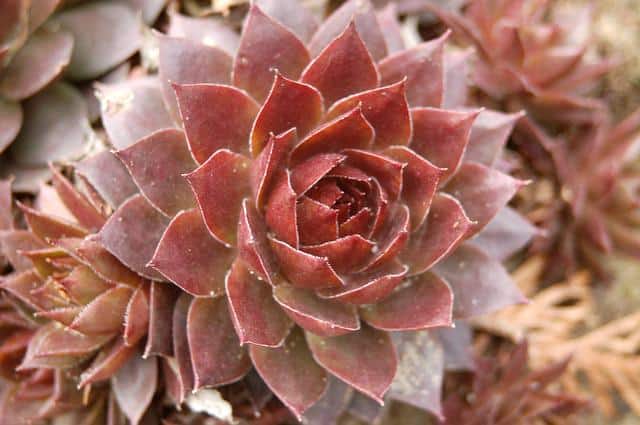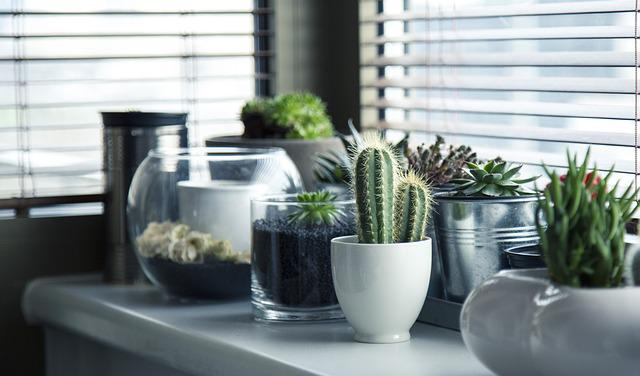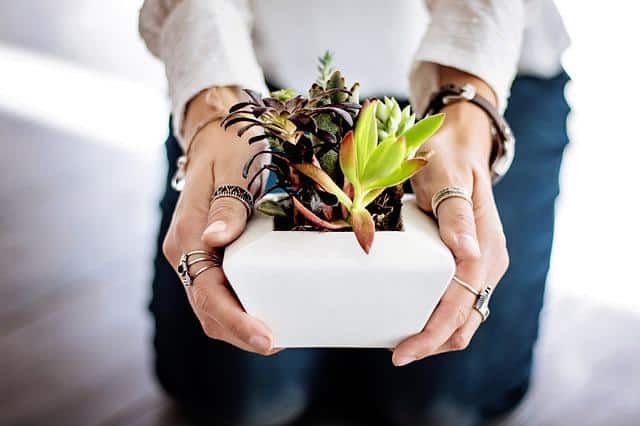Even though succulents love dry conditions, they don’t always love the sun. So what should you do if you think you see succulent sun damage?
Succulent sun damage occurs when the plants are exposed to the sun for too long. The UV rays damage the plant’s tissue and can cause wilted and drooping leaves. Most plants will recover if the heat wave isn’t too long.
It’s good to know that our little spiny friends will be okay. In this article, we’ll explore sun damage, how to spot it, and what you can do to treat your plants. Additionally, we’ll provide some helpful tips on how to prevent future succulent sun damage and keep your plants thriving.
Succulent Sun Damage

The leaves of your plant can become damaged when exposed to too much direct sunlight. It’s similar to when we get a sunburn from the UV rays.
What Is Sun Damage?
Succulent sun damage is caused by overexposure to UV light from the sun for too many hours a day. A full day of sun is considered anything 6 hours and above.
The same damage can result from too much heat from a grow lamp or another hot light in your house. Sudden changes in temperature or humidity have a similar effect.
Signs of Sun Damage
The sun damage will appear as a burn on the leaves and can be different colors depending on the type of plant. The splotches may be brown, yellow, or red. If the damage isn’t caught in time, the burns will eventually turn a dark brown, and the leaf may die off.
If your leaves are wilting or falling off, this can be a sign of sun damage. The leaves may also have a yellowish tinge, red burns at the tips of the leaves, dry and brittle roots (because the leaves can’t receive enough nutrients), and affected areas of the stem may turn red or yellow as well.
Types of Sun Damage

Superficial burns have small amounts of damage with some redness that doesn’t extend within the leaf tissue.
Partial thickness burns damage part of the leaf tissue but not the entire way through. Here you’ll start to see blisters or burnt patches. If possible, trim the blisters off.
A deep sunburn extends halfway through the succulent leaf and has bright red or yellow blisters. You’ll need to cut off the affected areas and repot the plant into a much shadier area. After a deep burn, the plant may take several weeks to recover.
Ways To Treat Sun Damage
When the succulents burn badly enough, the plants cannot absorb water and nutrients through their leaves. You treat sun damage by replanting them in a shady spot and spraying (not watering) the plant with cool water.
You don’t want to water the plant because most plants go dormant under severe stress. Dormant plants don’t absorb water well and can die from damp soil. The roots can rot out, and then you’ll have two problems.
If the leaves are wilting or drooping, add a little extra mulch around the base of the succulent to protect it from the sun and help it retain moisture. Adding fertilizer to the soil will help the plant maintain vitamin and mineral levels to ensure new growth is strong and healthy.
If there are dead leaves, remove them with gardening shears. While the plants are recovering, keep an eye out for pests or infections. The sunburn weakens the plants’ immune systems and can make them an easy target for parasites.
Ways to Prevent Sun Damage

Check the sun recommendations for your plants. Succulents should come with tags or information on the best ways to care for them. Some succulents don’t like full sun and require partial or complete shade.
You can achieve this shade in a few different ways. If you have larger plants surrounding them, you can use the large leaves to protect the small plants underneath. Another option is to plant the succulents in shadier areas on your property.
If you live in an area that experiences rough winters, I recommend you plant your shade-loving succulents in pots. This way, you can move them out of the sun if it gets too hot while being able to take them inside once the first frost hits.
However, remember that your succulents need to be hardened off after winter. You can’t place them directly into the sunlight again after they spent the dark months in a relatively dark area. Slowly reintroducing your succulents to sunlight helps mitigate sun damage and other problems.
More about succulents: Can You Plant Succulents in Rocks?
Conclusion
Succulent sun damage isn’t the end for your plants if you catch the signs quickly enough. Watch out for drooping leaves, dying petals, and brown or yellow patches on the plant.
You can treat sun damage by providing a cool, shady spot for the plant to rest with plenty of fertilizer to recover. Prevent the damage by ensuring the proper succulents are planted in the correct locations.
Frequently Asked Questions
Can a sunburned succulent recover?
You can’t save the damaged leaves or sunburnt areas, and it can be best to trim them off. However, the plant will continue to grow and thrive if the appropriate actions are taken quickly. Check for new growth to see how your plant is doing health-wise.
What does sun damage on a succulent look like?
Sun damage on succulents looks like white or pale patches on the succulent leaves. You’ll also notice leaves drooping, curling, dying, and becoming too thin. When they die, the leaves will turn brown or black. Other damage includes the stalks and stems reddening and appearing cracked.
Blisters will appear on the tops of the leaves closest to the sun or the oldest leaves at the base. It is normal to see sun damage on older leaves because they’re not as strong.
What happens if a succulent gets too much sun?
Not all succulents can handle a full day of direct sunlight. When they receive too much sun, the leaves or “petals” will begin to burn, similar to how we burn under UV rays. This can lead to the plant dying if not taken care of.

Hey, I’m Lisa and I’ve been an avid gardener for over 30 years. I love writing, talking and living in the garden! Feel free to connect with me on my socials below

